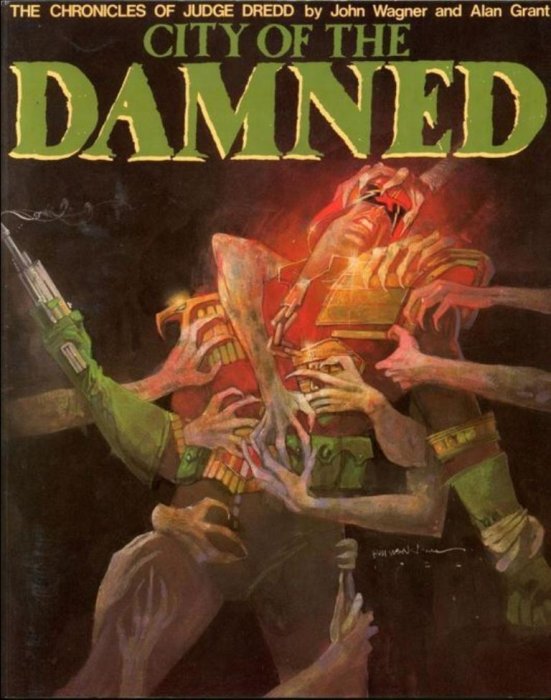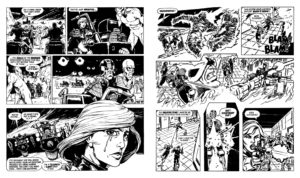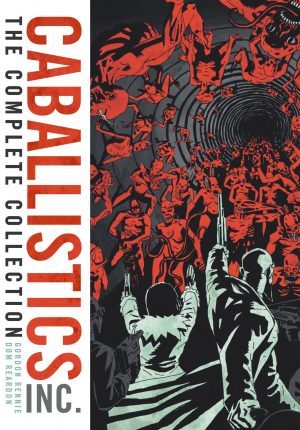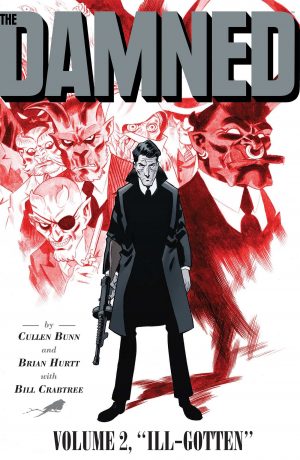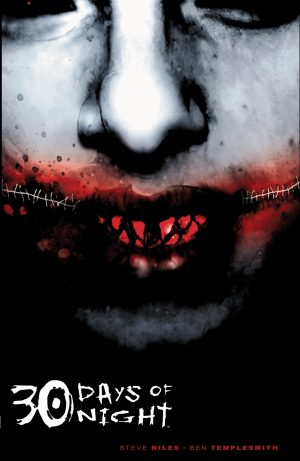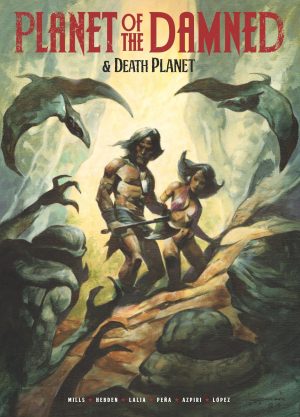Review by Frank Plowright
City of the Damned originates from the mid-1980s golden period of Alan Grant and John Wagner’s run on Judge Dredd, but is a rare misfire. Planned to run for far longer, the writers finished it after three months of serialisation, realising it wasn’t hitting the intended heights.
The starting point was the earlier prediction from The Judge Child Quest that a catastrophe was coming to Mega-City One. With an experimental time machine devised, Judges Dredd and Anderson are sent to the future to see if that disaster has been averted. They arrive in an era of feral vampire Judges dependant on blood where an incredibly powerful mutant brain transforms and controls, creating a world of utter evil for his own amusement.
City of the Damned starts off well enough with a succession of threats thrown at Dredd and Anderson while she uses her telepathic talents to work out what’s happened. Steve Dillon (sample art left) draws most of this, really putting the effort into creating the savage world, while Ian Gibson and Ron Smith are dependable back-ups. The memory is of Kim Raymond (sample art right) being an unworthy Dredd artist, yet his chapters, while not matching the other artists are certainly no disgrace. The opening few episodes of set-up work nicely, with Dredd and Anderson given an impossible mission, and Dredd vs Dredd is a good idea, but around halfway the story runs away from the writers, becoming an episodic sequence of chases. There’s another good idea behind how the big menace came about, but the menace itself is unconvincing, spouting standard revenge homilies, and the devastation caused isn’t bolstered by much in the way of motivation.
Wagner and Grant have set up their escape mechanism well, so even when bringing matters to a rapid close it’s another neat piece of plotting. The finale itself has Dredd as savage as the threat. There’s no consideration of the genetics vs nurture theory of upbringing here, and if pause is taken to consider what’s actually happening, that lack of sentimentality is shockingly drawn by Smith.
Because City of the Damned arrived during the course of such a classic run of stories there’s a slight unfairness to its poor reputation. Compared with some of the Dredd to come once Wagner and Grant stopped writing everything it’s compact, logical and contains good ideas. It just doesn’t sparkle, though. It’s now found as part of Judge Dredd: The Complete Case Files 08.
